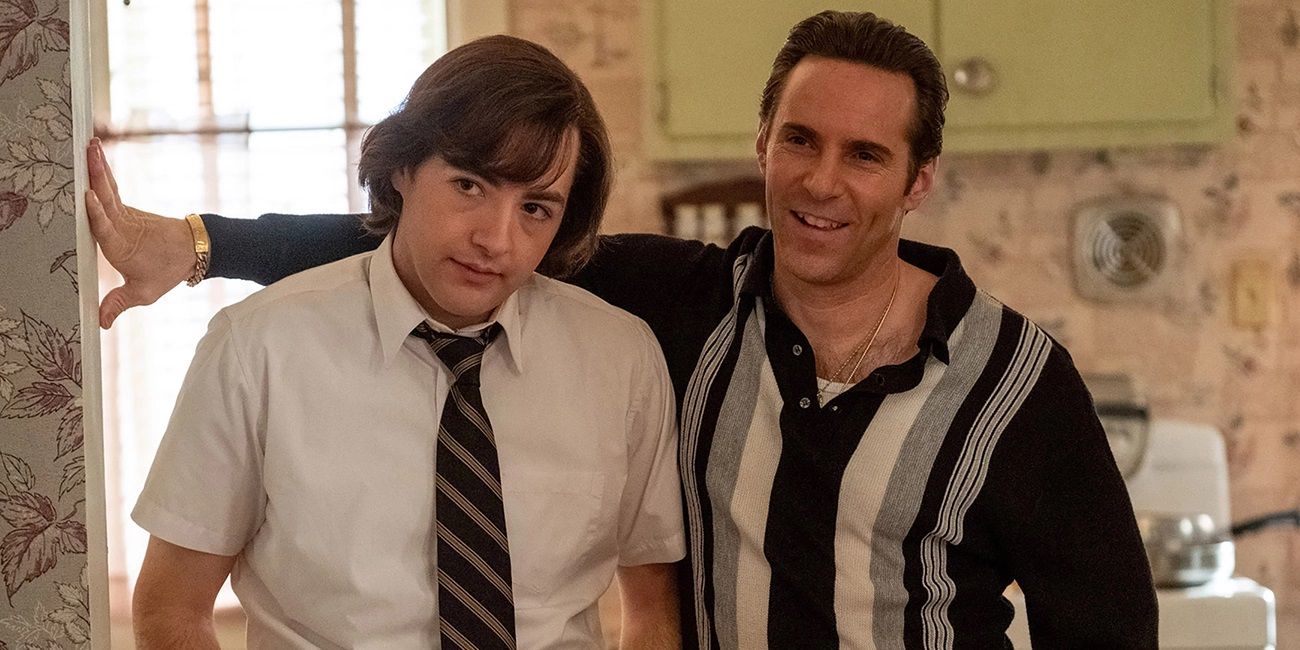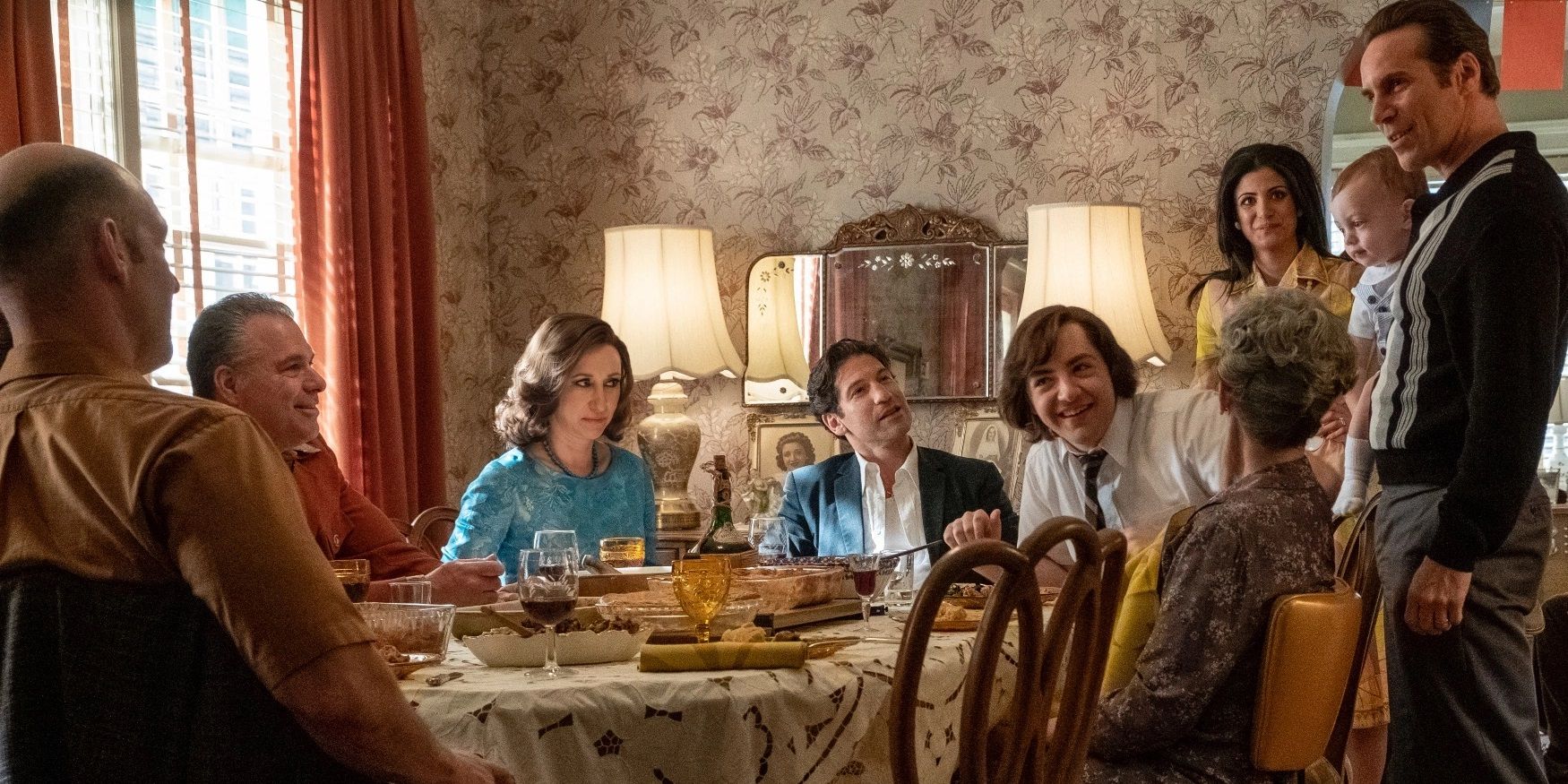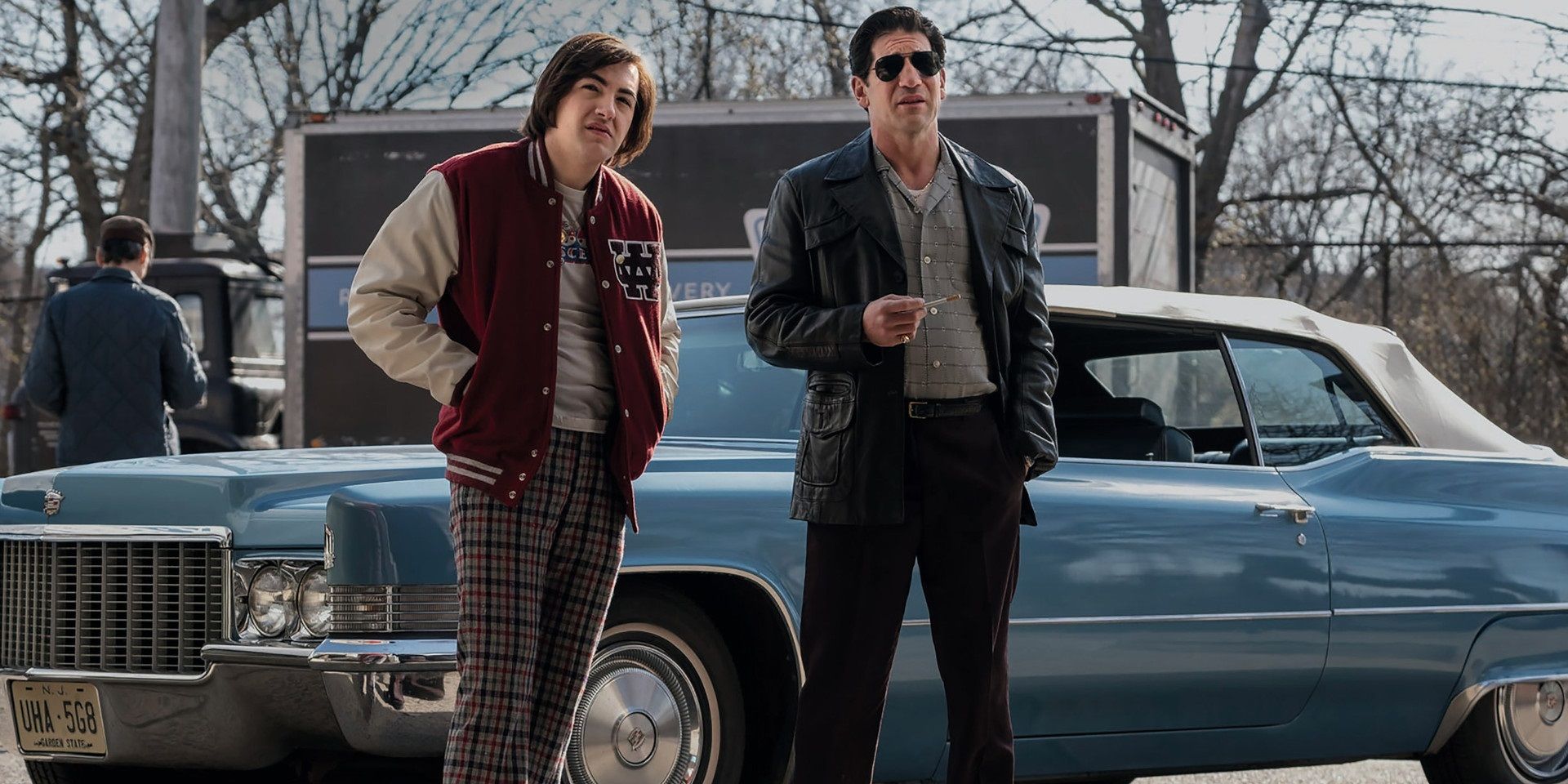This is a spoiler-free review.
HBO’s The Sopranos is the latest acclaimed TV drama to get a spin-off movie. After the success of Breaking Bad, Downton Abbey, and Deadwood’s movie adaptations, David Chase has followed up his hugely influential crime saga with a prequel set during Tony Soprano’s childhood. Overall, The Many Saints of Newark is a satisfying follow-up to the series worthy of its place in The Sopranos’ iconic legacy. It expands on the backstories that the show originally hinted at, and breathes life into a time and place that existed anecdotally in the series.
A common criticism of TV-to-movie adaptations is that they don’t escape the limitations of the small screen. The movie version of Entourage is basically just an episode of the show that happens to be an hour longer than all the others. Thankfully, The Many Saints of Newark doesn’t have this problem. With a visual style of its own and a handful of new themes, Many Saints is much more than just an oversized Sopranos episode.
RELATED: Jon Bernthal Warns Sopranos Fans To Expect Something Different From The Many Saints Of Newark
One of the most admirable things about The Many Saints of Newark is that viewers don’t need to have seen The Sopranos to enjoy it. There are ample callbacks and familiar faces for long-time fans of the series, but the new characters and their stories are compelling enough to stand on their own. Director Alan Taylor – who previously helmed nine episodes of the series – deftly walks the line between fan service and individuality.

The acting in The Many Saints of Newark is phenomenal. The movie features terrific performances from both actors playing new characters – like Ray Liotta as Christopher Moltisanti’s grandfather “Hollywood Dick” and Leslie Odom, Jr. as double-crossing mafioso Harold McBrayer – and actors taking on existing iconic roles, like Corey Stoll as a more youthful but equally curmudgeonly Uncle Junior and Jon Bernthal’s dryly comic turn as Tony’s volatile father “Johnny Boy.” Vera Farmiga is the standout cast member. She doesn’t just nail Livia’s uniquely raspy accent; she nails the character’s erratic temper that will only worsen with age.
Michael Gandolfini as young Tony Soprano could’ve been cheap stunt casting, and the pressure must’ve been immense. Playing a role made iconic by another actor is daunting enough when the other actor isn’t your late father. But, just like when O’Shea Jackson, Jr. played his own father in Straight Outta Compton, any concerns of nepotism fade away moments into Gandolfini’s revelatory performance. He doesn’t just mimic his dad’s portrayal of Tony. His brilliantly understated performance explores what Tony would’ve been like at a different time in his life. He’s not the boss yet; he’s an impressionable kid surrounded by questionable adult role models. The younger Gandolfini plays into the endearing sensitivity that Tony will later bury under several layers of toughness.

Chase’s script, co-written with Sopranos writer Lawrence Konner, follows an interesting structure. It’s split into two halves: the first half establishes the historical context with the 1967 Newark riots symbolizing racial tensions in America; then, after a time jump, the second half sees a teenage Tony Soprano being lured in by the mafia lifestyle. This episodic plotting feels more like TV than a movie, with lots of meandering subplots involving a huge ensemble of disparate characters.
But this storytelling style works really well for the movie as a snapshot of organized crime in Newark at that time. Telling the story through loosely connected vignettes keeps the focus on the characters and the immersive milieu as opposed to getting lost in the same tired beats of a standard three-act Hollywood screenplay. This plodding narrative does mean that the film sometimes feels aimless and starts to drag, but there are plenty of Sopranos Easter eggs and brutal scenes of gang violence (including one involving a tire rotator) to keep the audience’s attention.

Narratively, it might feel more like a condensed TV miniseries than a movie, but The Many Saints of Newark has a few breathtaking cinematic moments that still make it worth watching on the big screen. A night-time shootout in the street that moves inside a closed restaurant is a masterclass in tension. A haunting murder scene at the beach evokes the sobering realism of films like Rocco and His Brothers. A gangster wandering forlornly through the anarchy of a riot captures a couple of poignant moments like a woman cradling a gunshot-ridden man’s corpse.
The Many Saints of Newark might not be as groundbreaking as its predecessor – The Sopranos changed the television landscape forever, so that would be some impressive feat – but it’s a great movie nonetheless. It’s both a fan-pleasing entry in the Sopranos canon and a captivating, well-acted, visually stunning gangster movie in its own right.
The Many Saints of Newark is set to be released simultaneously in U.S. theaters and on HBO Max on October 1.
MORE: James Gandolfini's Son On Playing A Young Tony Soprano

